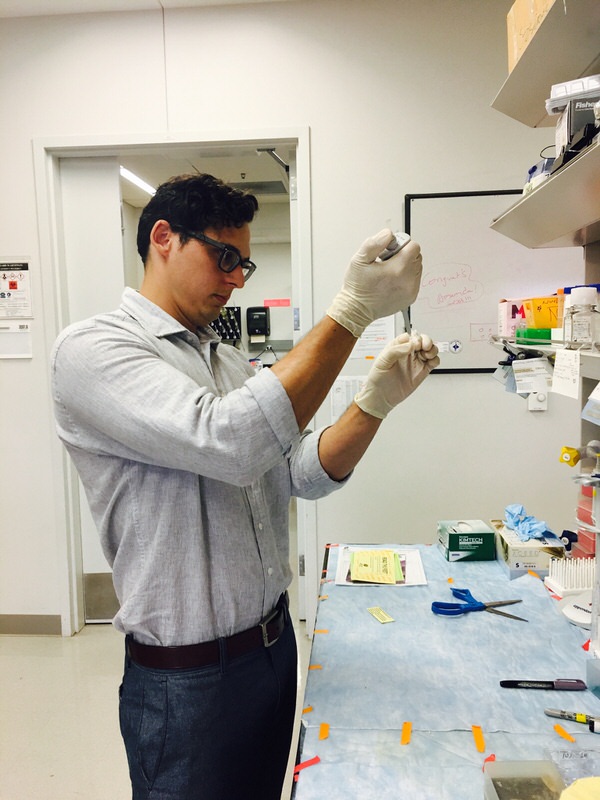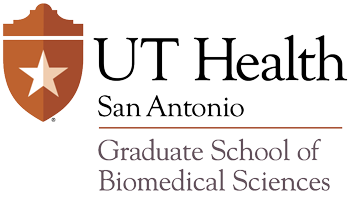Sealy Hambright: The Barshop Institute, Alzheimer’s Disease, and Translational Research
 Your name, program, mentor name.
Your name, program, mentor name.
Sealy Hambright, Biology of Aging Training Program, Cell Systems and Anatomy, Laboratory of Dr. Qitao Ran
When did you realize you were passionate about science?
Certainly in high school. Like most students, my attentions were often drawn away from the classroom but I always found myself engaged in my science courses, especially biology.
Please tell me about yourself, why did you pick UT Health Science Center, and your program.
By far it was the vibrant research ecosystem and opportunities. After receiving my Masters degree in microbiology at a smaller university, I wanted to do research that was more impactful to human health with more translational training. Further, The University of Texas Health Science Center at San Antonio was home to the Barshop Institute for Longevity and Aging Studies, a world renowned and heavily funded aging research center that would allow me to pursue my research interests in a state of the art environment.
 Tell me about your research. Why are you passionate about your research topic? How did you first become interested in it?
Tell me about your research. Why are you passionate about your research topic? How did you first become interested in it?
I study mechanisms of neurodegeneration in brain regions most afflicted in Alzheimer’s disease. My hope is to elucidate pathologically relevant forms of neuronal cell death in order to improve the diagnosis or treatment of Alzheimer’s or related dementias.
Alzheimer’s really hits home for me as my grandfather suffered from this crippling disease before finally losing his battle this year. Seeing the devastating effects of Alzheimer’s firsthand has certainly been a motivator for me and even though I am a small cog in a big wheel, anything I can do to improve the lives of Alzheimer’s patients makes it all worthwhile.
What do you want the public to know about your research? Why is your topic important?
Age is the largest risk factor for Alzheimer’s disease and the aged population (65+) is the fastest growing segment in the U.S. This means that as individuals live longer the incidence of Alzheimer’s will increase, creating an even larger healthcare burden. There is also no cure for Alzheimer’s, and current therapies only treat the symptoms of the disease (with minimal efficacy). Thankfully, these facts have not gone unnoticed and programs such as the BRAIN Initiative set forth by President Obama and UT-BRAIN (our UT system initiative) now provide much needed research funding to tackle the emerging healthcare crisis of Alzheimer’s and related neurological disorders.
Your abstract was recently selected for a platform presentation for the 23rd Annual Meeting of the Society for Redox Biology and Medicine (SfRBM 2016), can you tell me more about it?
Yes, I will be attending the meeting in San Francisco next month. I was also selected to receive a travel award to attend and participate in the meeting in San Francisco next month. It was a competitive award based on my abstract and my dissertation work. It’s a nearly complete story of my work in Dr. Ran’s lab and I’m ready to get good feedback from the scientists at Redox Biology. Overall, I’m excited and I look forward to it and disseminating my work.
What was your best memory during graduate school or what did you learn?
Hands down, meeting my wife Heather in the program and having two beautiful children. Could there really be any other answer? A close second would be our Biology of Aging annual retreats. Those are always a good time.
What do you like to do outside of graduate school?
I try and go outdoors as much as possible. This includes golf, hunting, fishing, and camping. Taking my sons along is the most gratifying.
What’s next?
Graduate, then post-doc. I hope to find a position studying novel diagnostic imaging techniques for neurodegenerative diseases as there is an urgent clinical need for these kinds of technologies. In the short-term, I look forward to expanding my knowledge and becoming a more well-rounded scientist. Down the road, working for a small but innovative biotech company seems appealing as I am quite interested in the commercial side of science.
